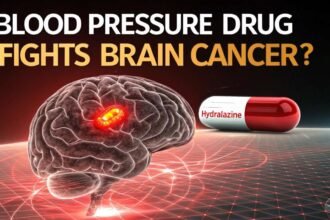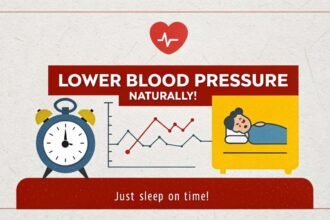Anemia is a disease that affects the health of millions of people all over the world. Anemia is a medical condition that occurs when there are not enough healthy red blood cells in the body to carry oxygen to the various tissues. A deficiency of the pigment haemoglobin, which is important for delivering oxygen in red blood cells, can cause symptoms such as fatigue, weakness, and shortness of breath.
According to the World Health Organization, more than 1.62 billion individuals around the world are affected by anemia, with the disease being more prevalent in women of reproductive age and in younger children. Researchers have also discovered that the likelihood of death for both mothers and newborns is increased when anaemia is present.
In spite of the frequency and severity of its effects, anemia is frequently misunderstood or incorrectly diagnosed. For this reason, it is of the utmost importance to disseminate information regarding the symptoms of anemia and the ways in which they can be treated.
What is Anemia
Anemia is the condition that occurs either when there are not enough red blood cells or when haemoglobin, the pigment in red blood cells that is responsible for carrying oxygen, is deficient. Apathy, weakness, and trouble breathing are some of the symptoms of this condition. Anemia can be caused by a wide variety of factors, some of which include deficiencies in the food, excessive blood loss, issues with the bone marrow, and disease. To cure anemia, a doctor may recommend making adjustments to the patient’s diet, taking dietary supplements, or prescribing medication; however, they will first attempt to determine the cause of the condition.
What are the symptoms of Anemia?
The symptoms of anemia might vary from person to person depending on the underlying cause of the condition and the severity of the anemia. The following are some of the symptoms that are encountered most frequently:
- Fatigue and weakness
- Shortness of breath
- Dizziness or lightheadedness
- Pale skin
- Rapid or irregular heartbeat
- Chest pain
- Cold hands and feet
- Headache
- Irritability
- Difficulty concentrating
It is imperative that you keep in mind that it is not unusual for there to be no symptoms present in the early stages of anemia. If you suspect that you have anemia, it is best to get a proper diagnosis and treatment plan from a medical professional as soon as possible.
Types of Anemia
There are several distinct types of anemia, each of which is brought on by its own unique combination of risk factors. The following is a list of some of the most common types of anemia:
Iron-deficiency anemia
This type of anemia, which is caused by a lack of iron in the diet, is the most common form of the disease.
Vitamin-deficiency anemia
This form of anemia, which is frequently neglected, is brought on by a lack of vital nutrients such as vitamin B12 and folate.
Hemolytic anemia
This particular form of anemia is caused by the premature disintegration of red blood cells.
Sickle cell anemia
There is a hereditary form of the condition known as sickle cell anemia. In this form of the disease, abnormal haemoglobin production leads to red blood cells that have a sickle-like shape.
Aplastic anemia
This type of anemia has its roots in a reduction in the production of red blood cells, white blood cells, and platelets, which is the underlying cause of the condition.
Pernicious anemia
This anemia is characterized by feelings of exhaustion and weakness, which are caused by the body’s failure to absorb a sufficient amount of vitamin B12 from the food that it consumes.
Thalassemia
This is a group of inherited blood disorders that affect the production of hemoglobin.
What are the causes of Anemia?
Anemia can be caused by a variety of factors, including:
- Blood loss: This condition can be brought on by extreme menstrual or gastrointestinal bleeding, as well as by internal or external trauma, surgery, or bleeding of any kind.
- Lack of red blood cell production: There are a number of factors that can contribute to this, including issues with the bone marrow, hereditary abnormalities, and the use of specific drugs.
- Destruction of red blood cells: There are a number of conditions, including autoimmune diseases, infections, and certain genetic disorders, that can cause this.
- Dietary deficiencies: A lack of iron, vitamin B12, and folate in the diet can lead to anemia.
- Chronic diseases: Certain chronic diseases, such as kidney disease and cancer, can lead to anemia.
- Pregnancy:Because of their increased need for iron and other minerals, pregnant women frequently suffer from the condition known as anemia.
How is Anemia diagnosed?
The diagnosis of anemia typically involves looking at a patient’s medical history, conducting a physical exam, and conducting laboratory tests. The following is a list of some of the steps that are involved in the process of diagnosing anemia:
Medical history: The doctor will ask about symptoms, dietary habits, and any past medical conditions or treatments that could contribute to anemia.
Physical examination: The doctor will check for physical signs of anemia, such as pale skin, rapid or irregular heartbeat, and an enlarged spleen.
Blood tests: A complete blood count (CBC) is the gold standard for diagnosing anaemia since it examines the size and quantity of red blood cells, as well as the concentrations of haemoglobin and hematocrit. Additionally, testing for autoimmune diseases and genetic abnormalities, as well as iron studies, vitamin B12 levels, and folate levels, may be administered.
Bone marrow biopsy: In some cases, a bone marrow biopsy may be done to examine the bone marrow and help determine the cause of anemia.












